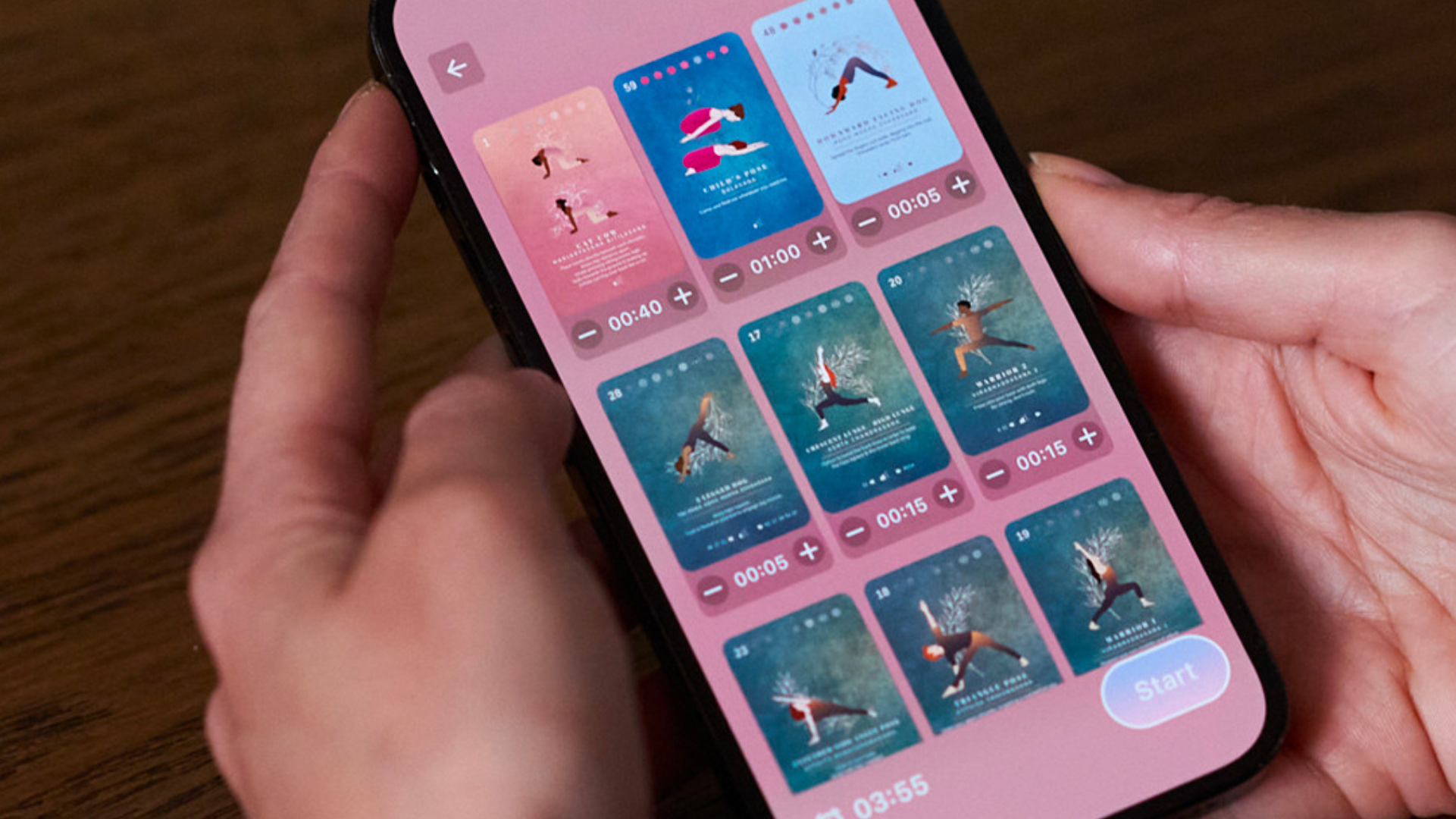
The Risk Worth Taking
Every bold idea starts with a whisper—an instinct you can’t ignore, even when everyone else tells you to play it safe.When I first shared the vision for
We’re Turning 5 – Celebrate With an EXTRA 15% OFF!
✨ Use code: PPB5YEARS at checkout
⏳ Offer ends Sunday at midnight – no extensions
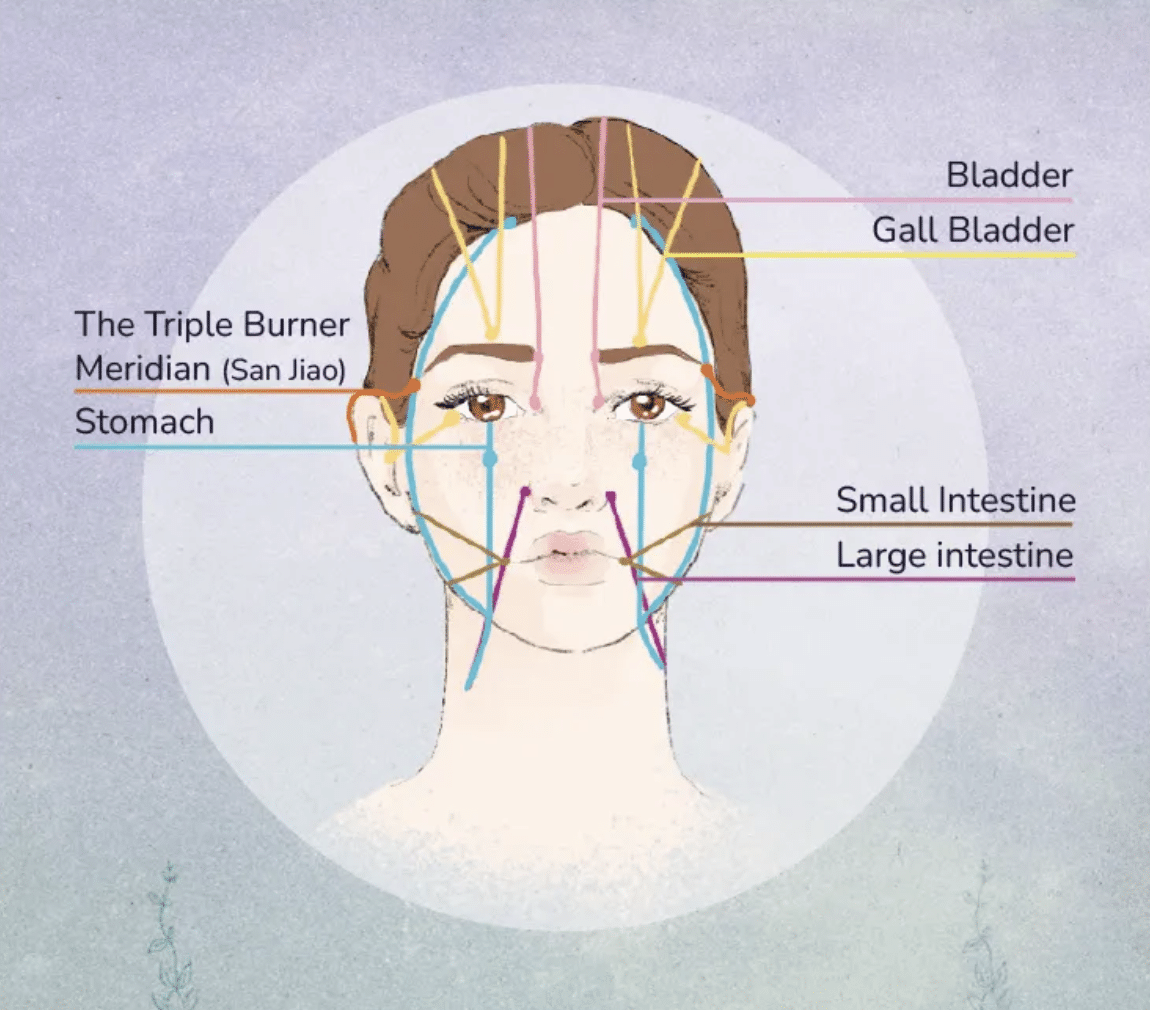
As an avid yogi, you probably know that yoga originates in India. But did you know one yoga style also has roots in Chinese Medicine? We absolutely love Yin Yoga because it stimulates the 12 meridians, which are energy channels in TCM (Traditional Chinese Medicine) by definition.
Why is this important?
Because, like chakras, life force energy, or “qi,” can get stuck or stagnate in these energy channels, leading to a whole host of diseases and mental disturbances.
Thus, Yin Yoga cleanses our energetic bodies deeply, and the benefits extend across our physical, mental, and emotional well-being.
So what are the 12 meridians, their definition and how can we work with them in Yin Yoga?
In Indian yogic teachings, energy in the body is known as prana, which moves through energy channels called Nadis.
In Traditional Chinese Medicine, there is a similar network of energy pathways known as the meridians. Vital life force energy called “qi” or “chi” runs through these.
When qi flows smoothly, we are in good health and mental well-being. However, if the energy becomes stagnant or blocked, we may feel the effects in our body as disease or in our mind as troubling emotions. The ailments we may suffer will depend on which meridian is blocked.
There are 12 major meridians:
As you learn about meridians’ definition, you may assume a meridian’s location is the same as the physical organ. However, this is not the case. They are not located in one specific body part like the chakras. Instead, they have a particular pathway they run through, which can be in the legs, arms, head, or along the spine.
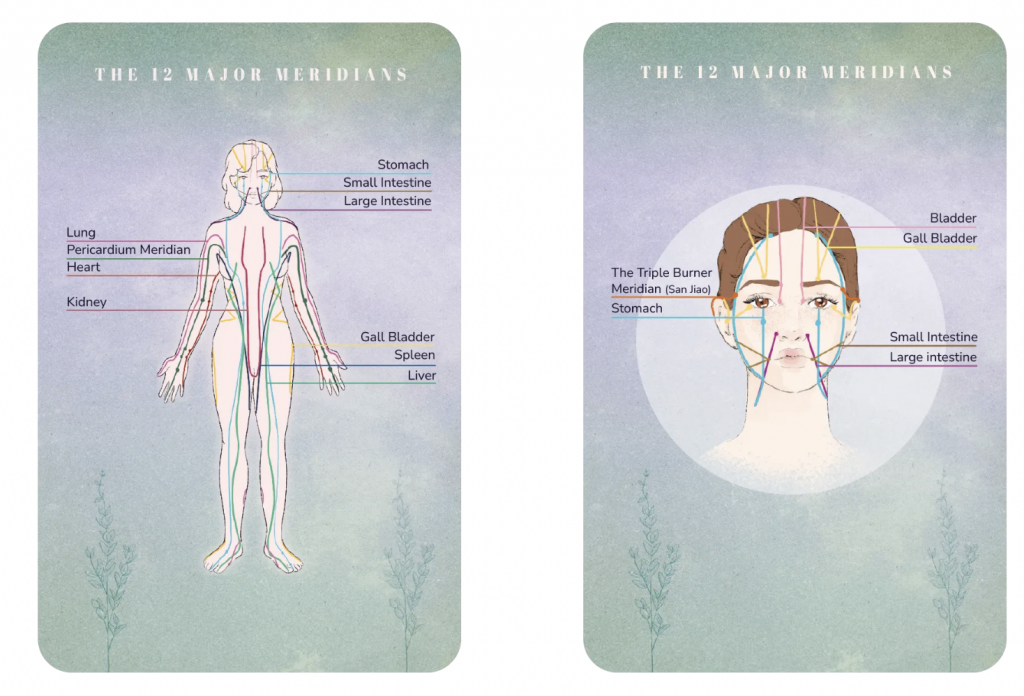
Interestingly, meridians can be either yin or yang. There are five yin meridians; Small intestines, Stomach, Large intestine, Urinary bladder, and Gallbladder. There are also five yang meridians; Heart, Spleen, Lungs, Kidneys, and Liver.
Taoism teaches that everything in life and nature needs a balance of yin and yang. Therefore, when it comes to the meridians, each yang meridian is paired with a yin one.
Like yin and yang in nature, yin and yang meridians complement each other. For example, Yin organs are solid and responsible for storing our energies and fluids. Meanwhile, the Yang organs are hollow and accountable for transforming and transmitting energy and fluids.
Each yin and yang meridian pairing has a specific function in the physical and emotional body. Let’s explore this in a bit more detail.
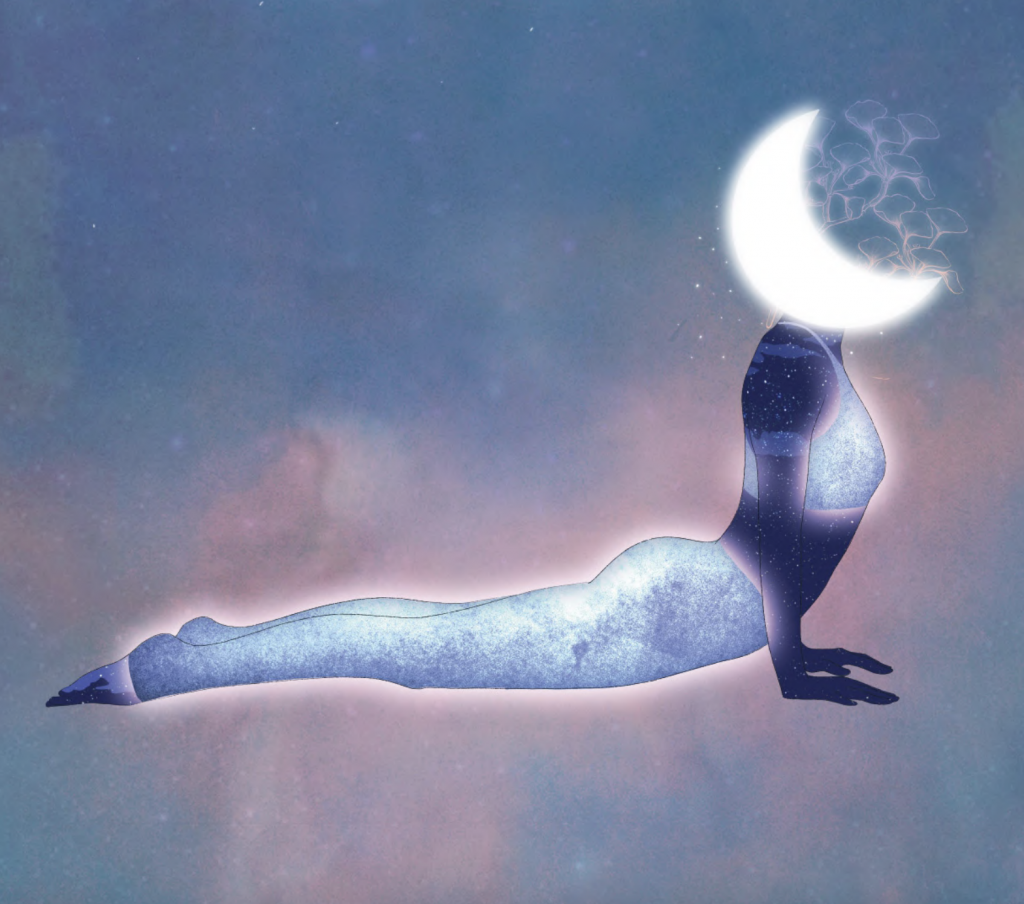
Because we hold yin poses for some time, they naturally stimulate particular meridians and help improve the flow of qi there. So here’s a brief list of which yin poses target which meridians.
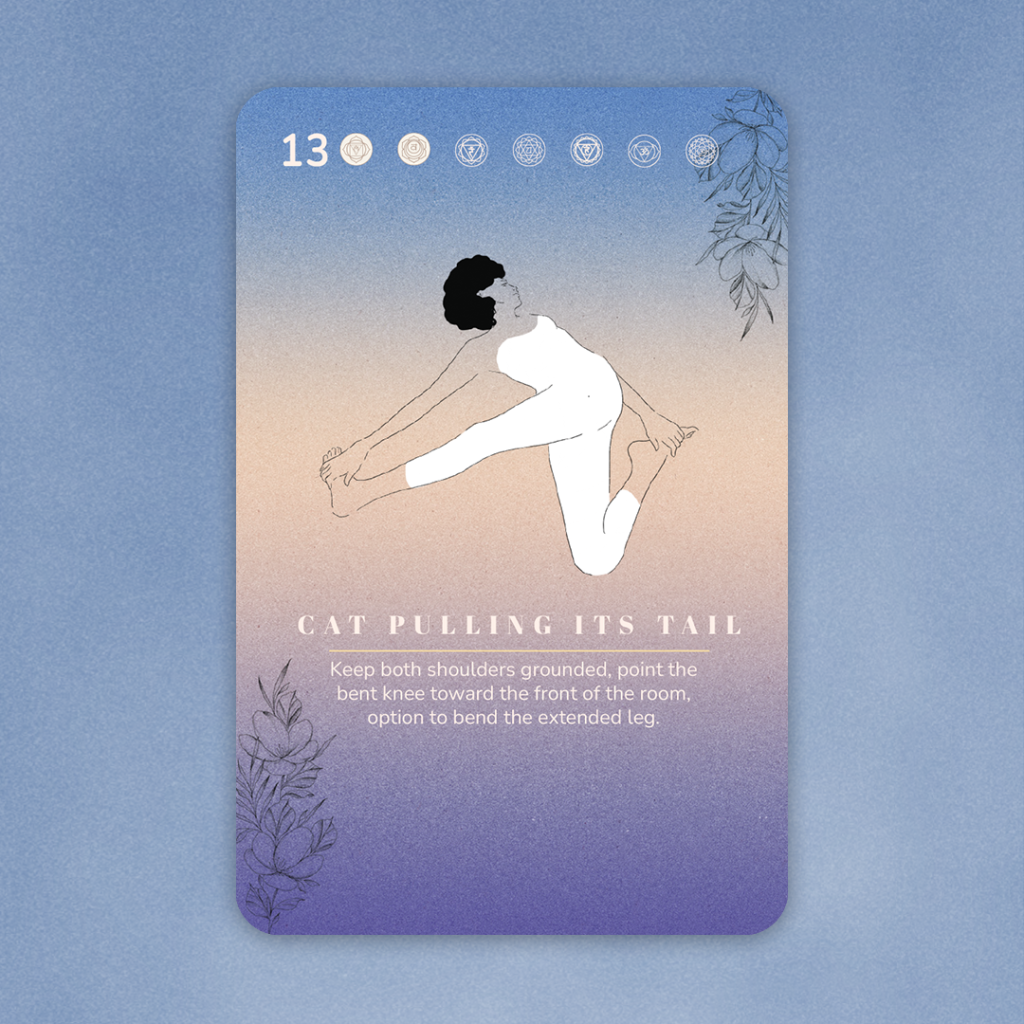
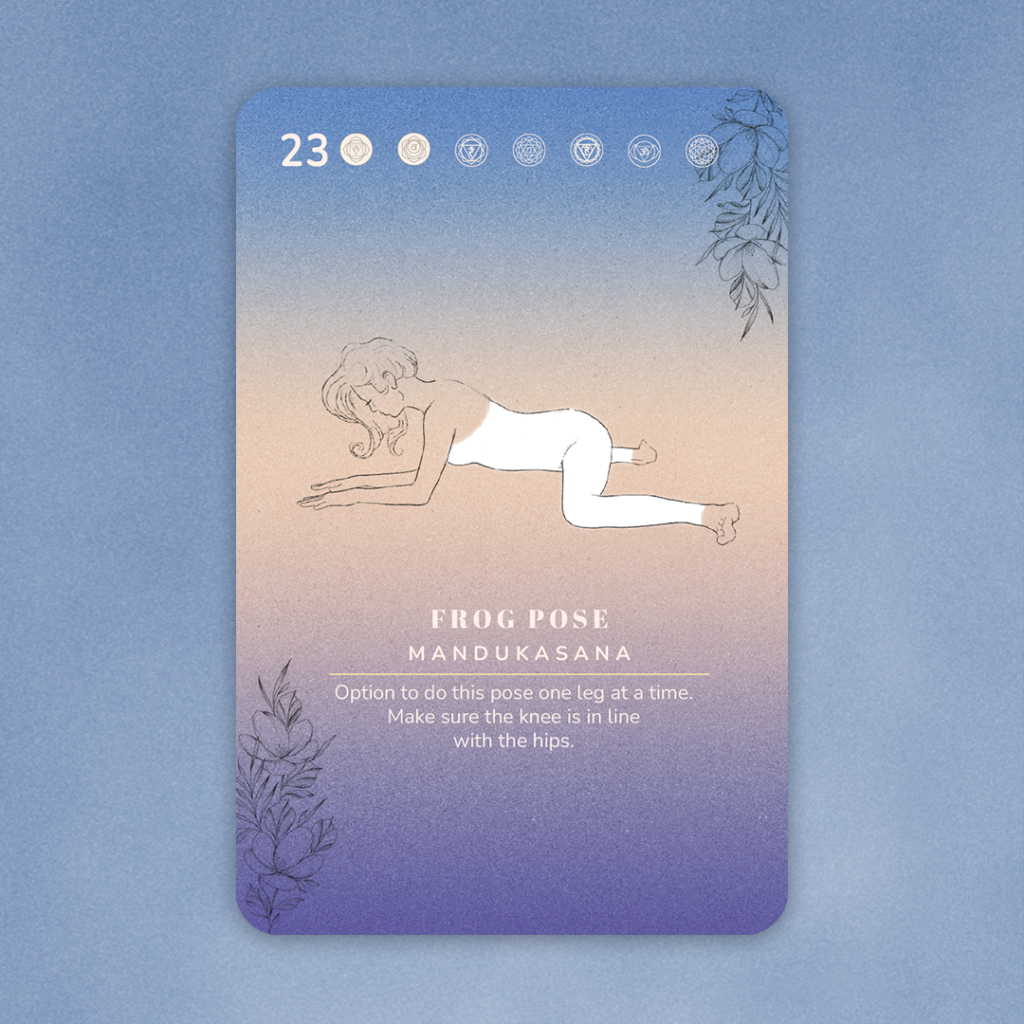
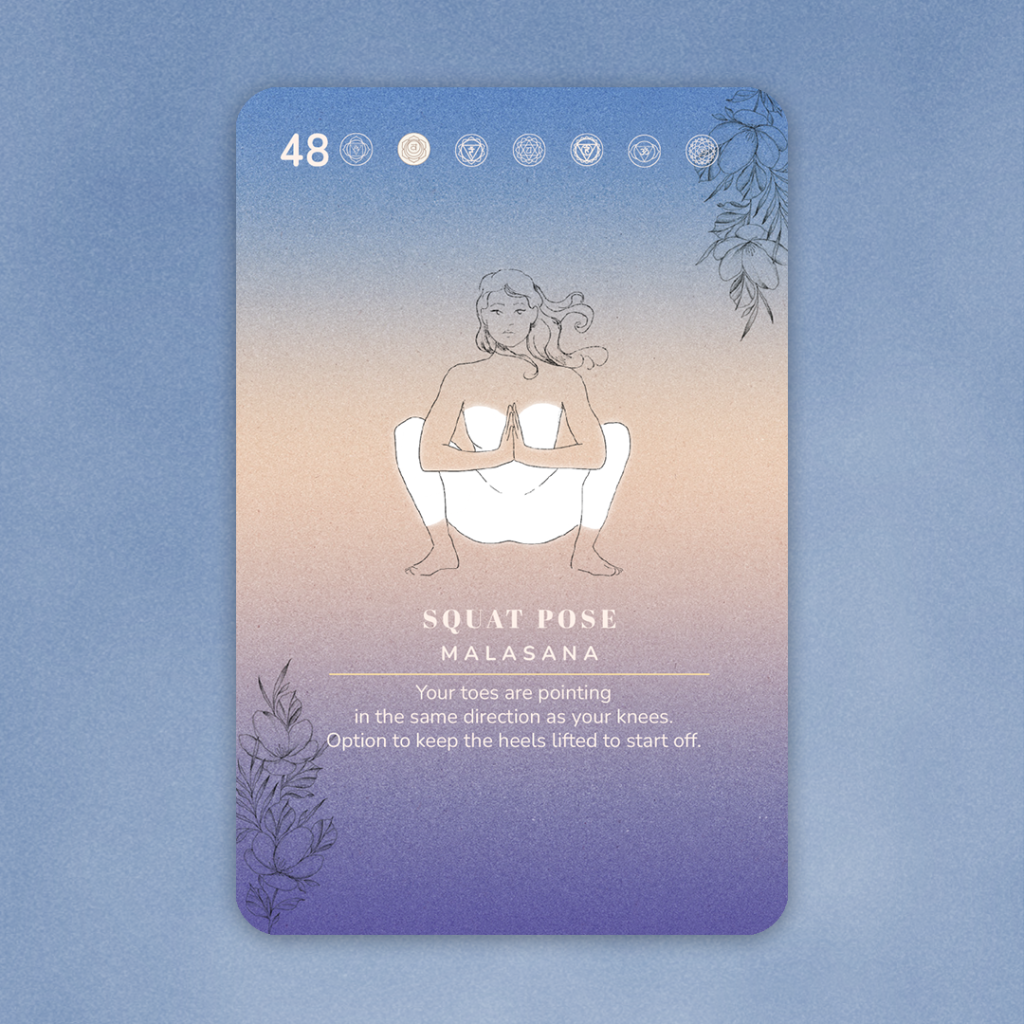
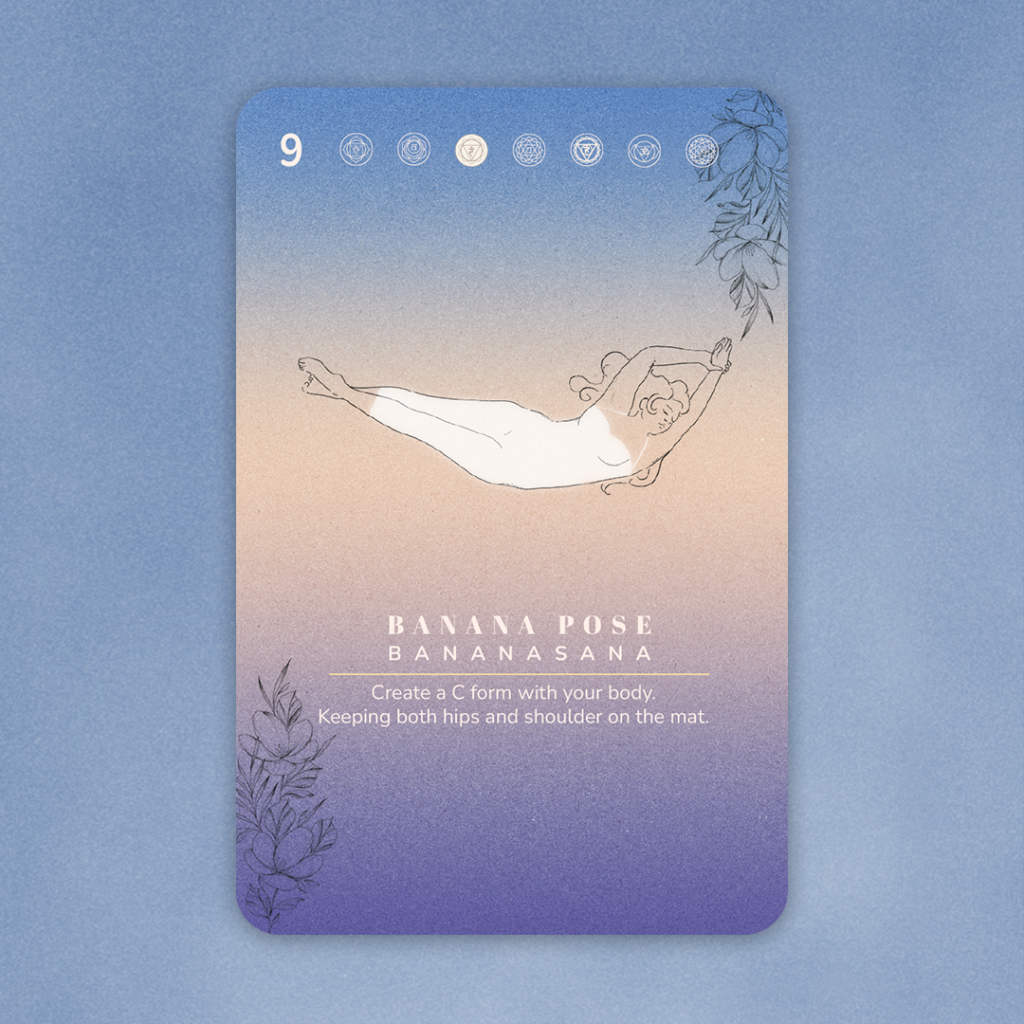
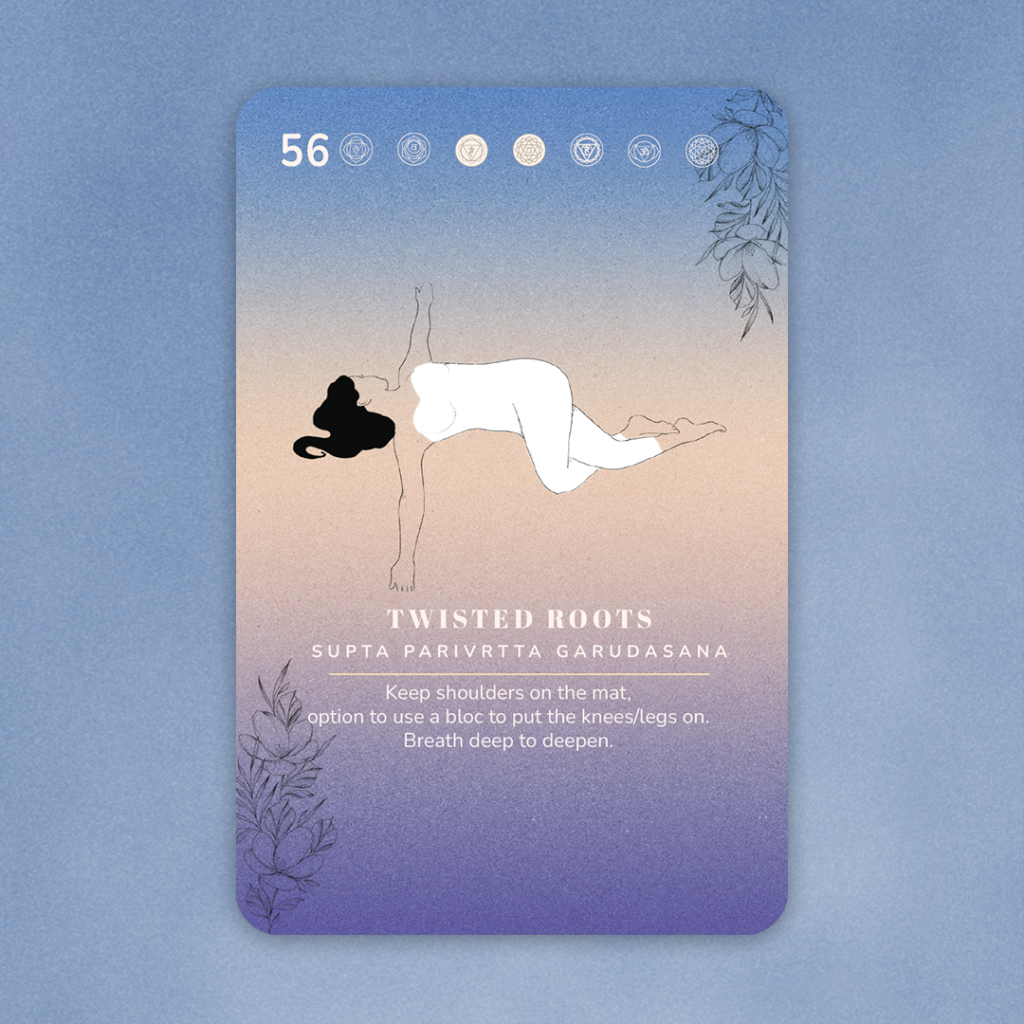
Now that you know the definition of meridians and their relationship with yin yoga, you’re likely wondering how to effectively target and stimulate them in yin yoga practice. Here are a couple of tips I learned from my yin yoga teacher training.
Each meridian pairing has a specific function that can benefit us differently. Therefore, I recommend choosing yin poses that target the energy channel you want to work on.
For example, suppose you’ve been feeling a lot of anger and frustration lately. In that case, this could mean a blockage in the Liver and/or Gallbladder meridians. Thus, creating a yin yoga sequence by selecting the postures which target these meridians may help you cultivate more calm and kindness.
Because there is already so much to remember when practising yoga at home, here at PlayPauseBe, we wanted to make it easy for you to work with the meridians. That’s why we added meridian indicators to our Yin Yoga Deck.
On the back of each asana card, you’ll see icons for the 12 meridians. The highlighted icons indicate the meridians that the asana stimulates. Thanks to this handy feature, creating therapeutic yin yoga sequences couldn’t be easier. Flick through the cards and pick the ones for the meridians you want to focus on, then put them together in a flow; it’s that easy!
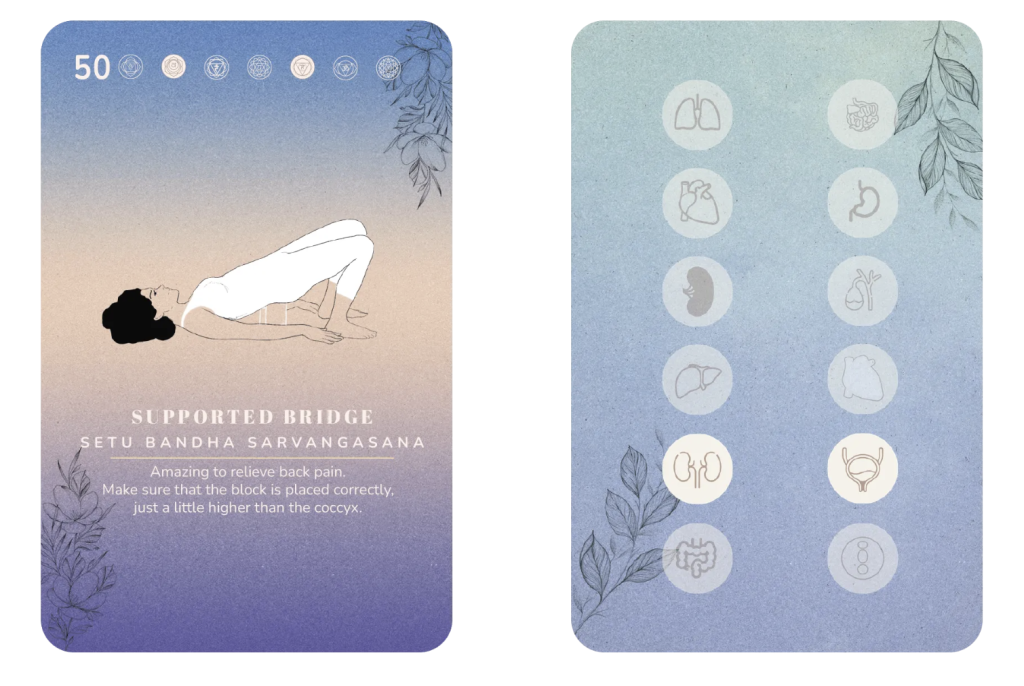
In the Yin Yoga Deck, we also included two additional cards showing the location of each meridian, improving your understanding further. I recommend locating the beginning and end of the meridian lines (most are on the hands or feet) and applying pressure with your thumb to these points while holding the associated poses.
This acupressure technique may improve the flow of qi further. Typically you press and massage a point for one to two minutes by gently kneading your thumb in a tight circular motion. However, be careful to apply pressure slowly and gradually and maintain a slow, deep breathing pattern.
Want some ready-made yin sequences, targeted to each of the 12 meridians? Then check out the Yin Sequence Guidebook, with 20 carefully curated yin sequences put together by our experienced yin instructors.
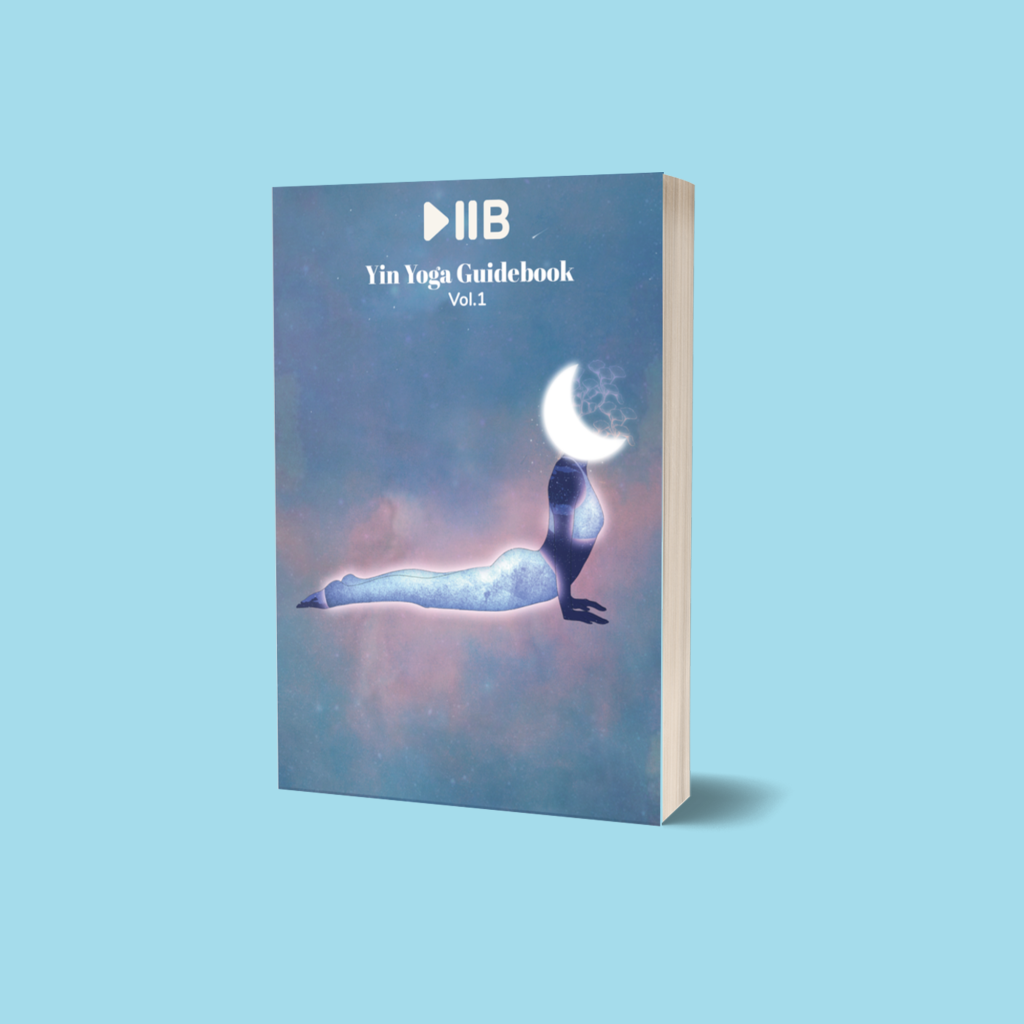

Every bold idea starts with a whisper—an instinct you can’t ignore, even when everyone else tells you to play it safe.When I first shared the vision for

In this post, you’re going to discover how to integrate Saucha (purification) into your breath through 2 powerful breathing exercises. Saucha, which means “purity”, can be
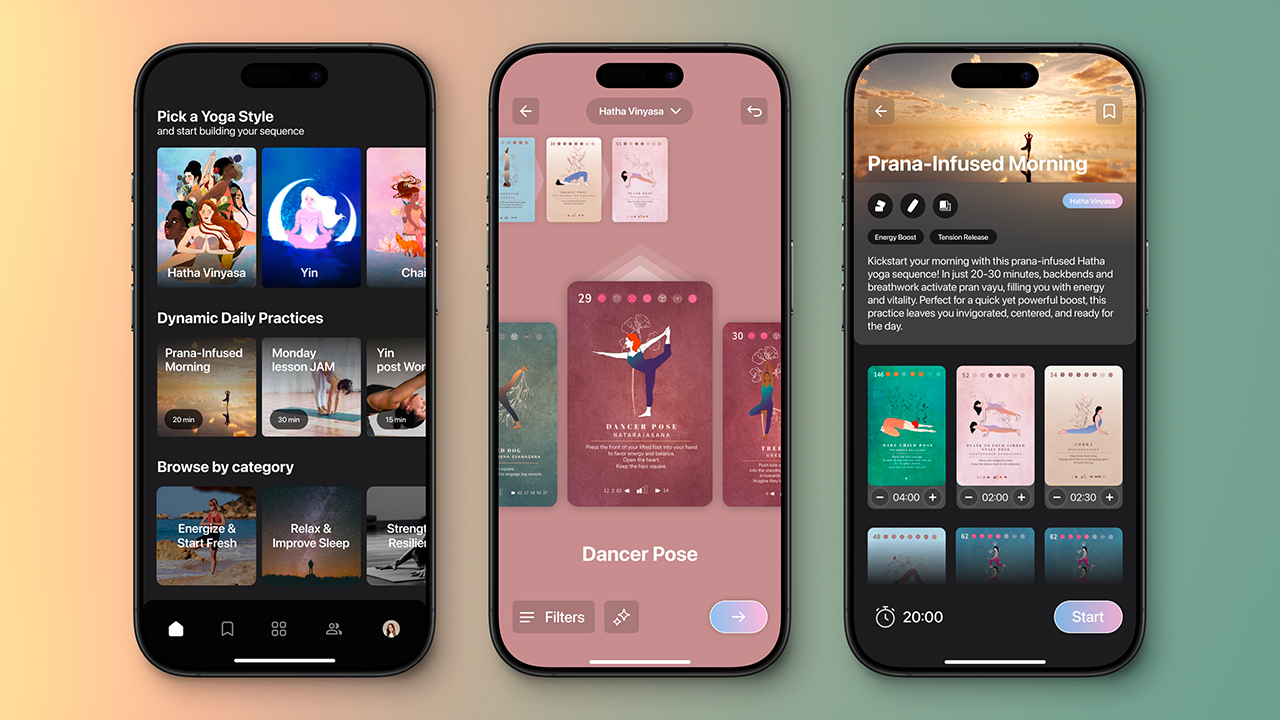
What if your yoga practice could feel as intuitive as breath—effortless, intelligent, and entirely your own? That’s the experience we’ve built with the Floga App. It’s not just another yoga app—it’s

Celebrate With an EXTRA 15% Off
Enjoy an extra 15% OFF everything – decks, bundles, and courses.
✨Use code: PPB5YEARS at checkout
Offer ends Sunday at midnight – no extensions!